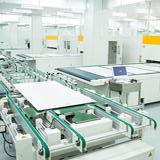

1. Try not to use soybean oil-based ink in the printing process, because soybean oil is a semi-dry (slow) oil, so it is not easy to dry when printing on paper with a dense surface.
2. The best way to solve the drying problem is to prevent it. You need to communicate clearly with the ink supplier before printing. The ink supplier of the screen printing machine knows their products better than the printer. What kind of printed matter does the ink act on? For example, a trademark nameplate , Printing on paper. Even different papers use different inks for printing. For example, the drying of ink on newsprint is completely different from the drying on a type of paper.
3. The printing environment should control the pH value of the fountain solution in the range of 4.0 to 5.0. The higher the acidity (the lower the PH value), the slower the ink drying process.
4. Mixing additional desiccant in the fountain solution can improve the drying performance of the ink.
5. Use large particles of dust to help separate the printed paper and allow more oxygen to enter and react with oil and resin.
6. Let the supplier increase the strength of the ink, so that it can be printed with a thinner ink layer, which can be fixed and dried more easily.
7. Because the temperature of the printing press or paper may be too low and will delay the ink drying, pre-treat the paper before printing.
8. When printing a large area of solid land, use a varnish containing desiccant or a transparent size for overprinting.
9. Use the recommended amount of desiccant for the ink being used. Too much desiccant will plasticize the ink so that it does not dry.
Tel:15158365810
HTML:www.mysyqc.com
Add:No.185, bridge 3 road, xiaoqiaotou village, qiaotou town, cixi city